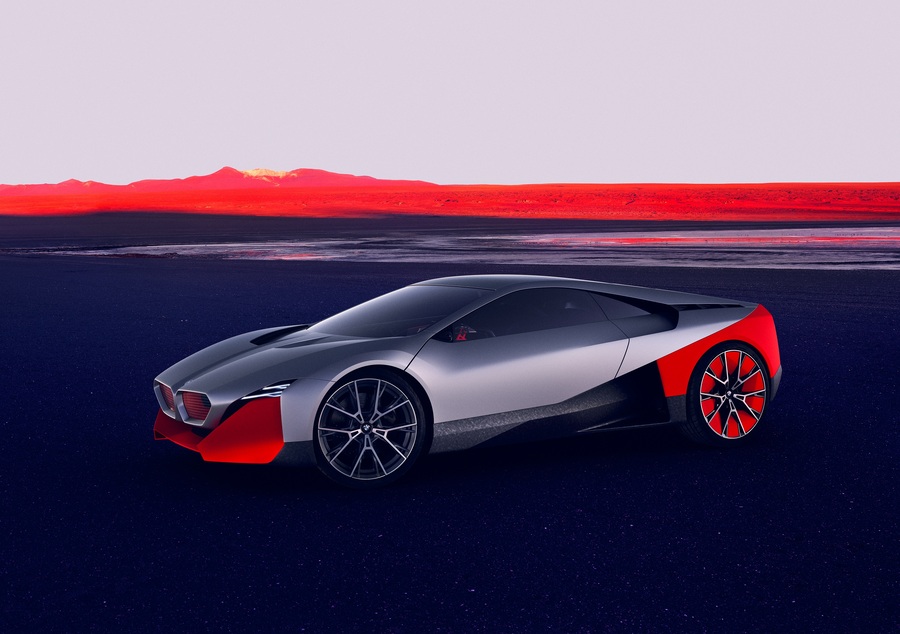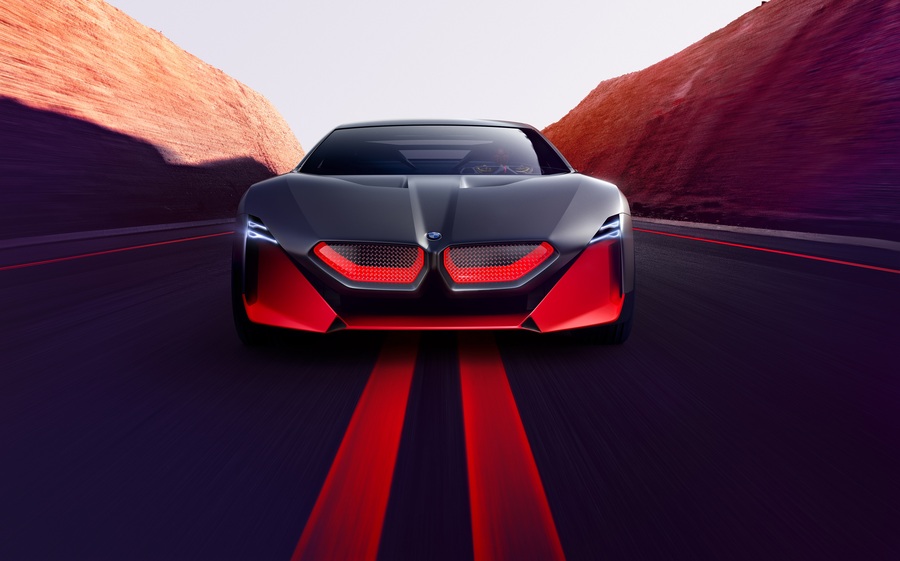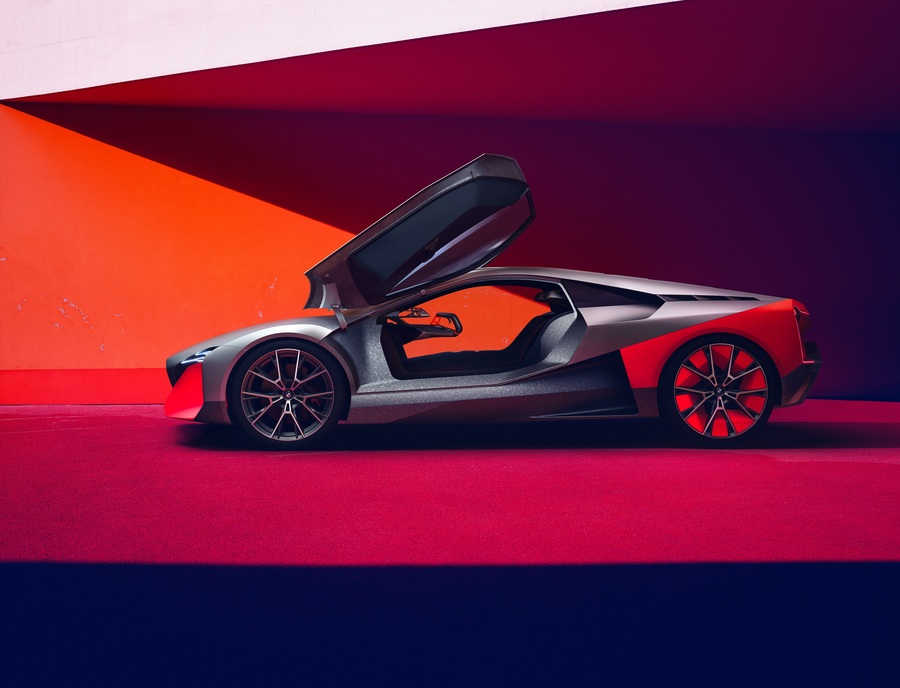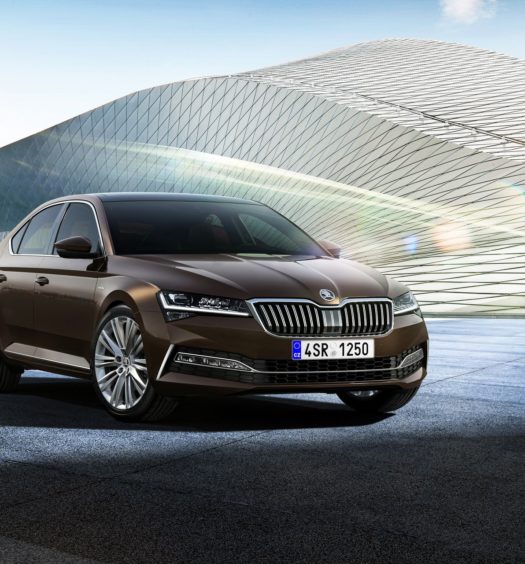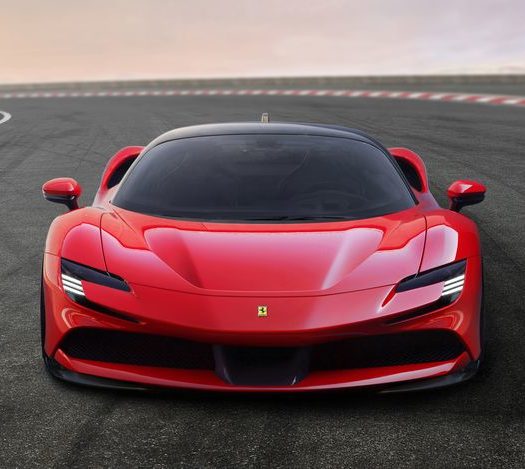BMW M, the motorsport division of the Bavarian automaker recently showcased a sample of what direction it intends to take in terms of product philosophy of the future. Christened the BMW Vision M next, the car offers an insight into BMW’s plan for the electrified future of automobiles.
The car has been built around two central tenets, namely EASE and BOOST. The former refers to self-driving capabilities wherein the passengers can experience the comfort and convenience of a living space on four wheels, whereas the latter refers to the experience of active driving. Both these concepts are underpinned by BMW’s innovation in the fields of Driving, Automation, Connectivity, Electrification and Services (D-ACES).
The Vision M Next features a radical design, many elements of which are a throwback to BMW’s previous models. It is presented in a dual colour scheme, which comprises of a cast silver metallic colour bodywork set off against lower panels painted in a very bright neon orange, dubbed ‘Thrilling orange’.
The front is unmistakably BMW, with the kidney grille now a slat-less affair; instead sporting a laser-etched pattern of tiny illuminated versions of the BMW propeller fan. A central channel recessed into the bonnet issues from ducts at the back of the bonnet, towards the front to separate the two grille units; an inversion of what was found on the 1972 BMW Turbo.
As one comes to the side, the Hofmeister kink, BMW’s signature profile for the glasswork beyond the C pillar is now a part of the bodywork. The side of the car takes many cues from the BMW i8, in terms of not only character lines but also the way the doors open. The rear has glass slats in place of a windshield and abruptly ends into the high seating tail lamps. The tail lamps are strip lights surrounding small illuminated BMW logos.
The interiors are a sparse affair; the only visible hardware are a steering controller with displays and two gyroscopic cup holders that are integrated into the central tunnel of the car. The seats are cushioned contours incorporated into the carbon-fibre tub with vast doorsills. Adding to the visual appeal of the car is the use of recycled carbon fibre on elements such as the splitter, diffuser and doorsills. Unlike regular carbon fibre, recycled carbon fibre has an entropic pattern, which sets off very nicely against the more definitive bodywork.
The car has a plug-in hybrid drive train which comprises of a 4 cylinder turbocharged engine in addition to a battery pack. It can go up to a 100 km solely on battery power and achieve a top speed of 300 kmh in 3 seconds flat. Depending on the necessity, it is possible to switch between an all-wheel-drive and a rear-wheel-drive mode.
While the Vision M Next is a concept, it is speculated that it could enter production with a few tweaks. However, it goes a long way in defining what BMW has in store for the future.

